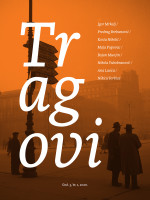Dvadeset pet godina poslije: uticaj rata i prisilnog raseljenja na kolektivne identitete Semberaca i izbjeglica u Bijeljini
Twenty-five Years Later: The Impact of War and Forcible Displacement on Collective Identities of Semberians and Refugees in Bijeljina
Author(s): Maja PupovacSubject(s): Local History / Microhistory, Social history, Studies in violence and power, Transformation Period (1990 - 2010), Migration Studies, Identity of Collectives
Published by: Srpsko narodno vijeće, Arhiv Srba u Hrvatskoj
Keywords: Bosnia and Herzegovina; Bijeljina; internally displaced persons; collective identities; refugees;
Summary/Abstract: Studying this topic with a significant time distance of two and a half decades, this paper addresses the question of how war and forcible displacement affected the collective identities of Serb residents of Bijeljina, a city in the northeast of Bosnia and Herzegovina. In particular, the paper examines the relationship between the local population and formerly internally displaced persons (IDPs) – Semberians (the native population of the region Semberia, with Bijeljina as its largest city) and refugees (population that is largely internally displaced and moved into Bijeljina during the war of the 1990s), as well as how this relationship influenced the creation, modification and development of their collective identities. The paper aims to highlight the wide array of identities that exist within the Serb ethnic group and within this particular micro-community, which plays a significant role in the integration process of former IDPs, and their understanding of themselves and others. As the case of Bijeljina exemplifies, the war and the forcible displacement of the population in Bosnia and Herzegovina have not only created strong divisions between different ethnic groups, but also within the same ethnic group. While some of these divisions persist only at the level of a stereotypical representation of the ‘other’, others have the potential to create significant social divisions between different groups of population, not only in the Bijeljinan micro-community, but in Bosnia and Herzegovina as a whole.
Journal: Tragovi: časopis za srpske i hrvatske teme
- Issue Year: 3/2020
- Issue No: 1
- Page Range: 203-247
- Page Count: 45
- Language: Serbian

